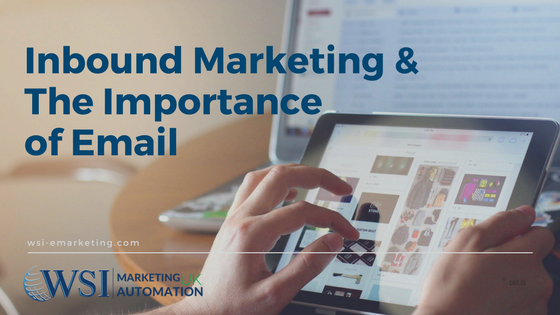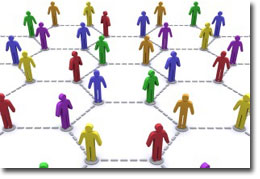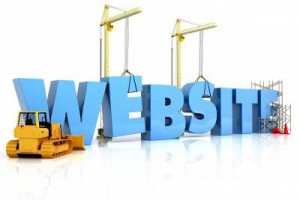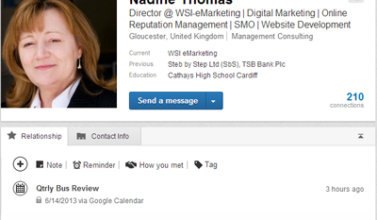
Over the years email has transformed from an outbound to and inbound marketing tactic and for good reason. Technology has become more dynamic and information more easily accessible which means marketers have had to change their strategy.
The new breed of users are more informed and want companies to hear them out. They no longer respond to the disruptive outbound marketing tactics where companies only talk about themselves. This is where inbound marketing comes in along with implementing a vibrant, powerful and inclusive email nurturing campaign.
Inbound Marketing and Email Strategy
According to a report from the Radicati group, 2018 will see 2.8 billion email users worldwide, while data suggests more than 3 billion by 2020. It’s no surprise then that email remains the most prevalent form of business communication.
Email is a critical component of your inbound marketing strategy where highly targeted emails to an opt-in list can greatly grow your overall reach. However, using less targeted efforts to purchased email lists can radically reduce your marketing effectiveness and company credibility. Implementing the best practices of email marketing in inbound is paramount to a company’s success.
Inbound marketing is customer-centric and focuses on potential customers finding your business. The main aim is to draw customers towards your products and services through content marketing, social media marketing and SEO. It enhances the customer experience by offering relevant and valuable information through various marketing channels.
“If you’re running a real business, email is still the most effective way to universally reach people who have expressed interest in your product or site. For that, it really can’t be beat.” – Colin Nederkoorn (founder Customer.IO)
Stages of Inbound Marketing
Inbound marketing helps troubleshoot problems people face within their respective fields by sharing relevant and valuable content. It’s all about finding the right customers, being where they are and ultimately converting visitors into brand ambassadors or evangelists. Take a look at this brief overview of the four stages of inbound marketing.
- Attract unknown leads to become visitors through engaging blog content, good SEO strategies, social media and paid advertising (PPC).
- Convert visitors to leads using eBooks, emails or blog posts, white papers, How To Guides or gated content.
- Close leads into customers with effective email nurturing campaigns, CRM (Customer Relationship Management) and exceptional customer support.
- Turn customers into brand evangelists by means of customer feedback or reviews, more personalised emails, social listening, social media and continuous customer support.
Inbound Email Marketing Tips
Perfecting your email marketing strategy is essential to reaching the right customers at the right time with a relevant message. Email is engagement marketing personified and when it comes to email copy, content is always king. Getting readers to open your email takes just 2 seconds, but this can be helped along with subscribers who are expecting it.
First and foremost, you need to know your audience and segment your subscribers with similar preferences into predetermined groups. Use buyer personas as they are representations of your ideal customer based on real data and some educated speculation. These include demographics, behaviours, motivations and goals. It’s an ongoing process that continues through all the stages of inbound email marketing and ensures targeted communication.
It’s important to send the right message at the right time with the end goal of creating the ideal user experience. This principle should be applied to all the stages of the buyer’s cycle – awareness, consideration and decision. Fully understanding the buyer’s journey is crucial to maximise your conversions.
Conclusion
In the end, it’s all about nurturing leads and converting them into customers. People mostly want information without having to buy something first and as a result, your content should provide value, encourage engagement and drive conversions. Inbound marketing is all about creating the type of content that convinces them to make a purchase without being pushy. Your end goal should always be to convert your visitors into brand evangelists as the best form of advertising is satisfied customers.
Get in touch if you need help with your inbound marketing and email strategies. We provide digital marketing services including SEO, PPC, Marketing Automation, Adaptive Web Design, Social Media and Email Marketing among others.
Related Post
Content Sharing Via Social...
Target marketing to meet your business goals Is your business using social media channels...
- June 15, 2011
- By Nadine Thomas
- Digital Marketing
Getting the Most from your...
LinkedIn is not only the most popular social network for professionals but with more than...
- November 22, 2012
- By Nadine Thomas
- Linked In
Can you get help to fund your...
If you need a new website, it’s possible that you could get help towards the cost....
- May 30, 2013
- By Rob Thomas
- Digital Marketing
10 Best Ways to take...
Others may have seen a pop-up ‘invitation to upgrade’ message when they accessed...
- June 1, 2013
- By Rob Thomas
- Digital Marketing
Google Hangouts – 6 Ways...
Google+ was launched just 2 years ago in June 2011. In the first 6 months of its...
- June 24, 2013
- By Nadine Thomas
- Digital Marketing
6 top tips on how to get the...
In Europe alone there are 243.2 million Facebook subscribers (internetworldstats, 2012)....
- July 3, 2013
- By Nadine Thomas
- Digital Marketing











Leave a Comments